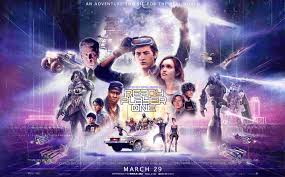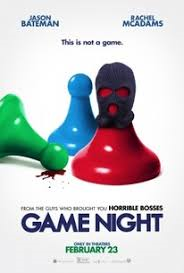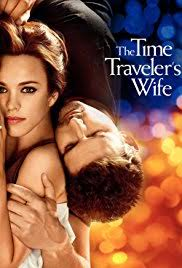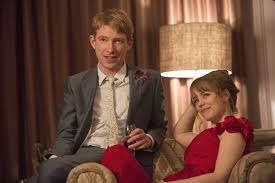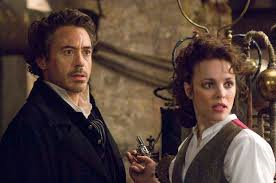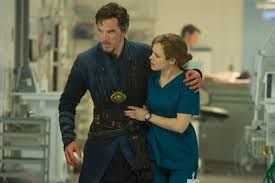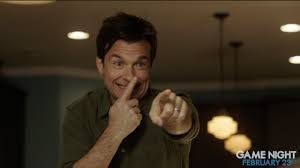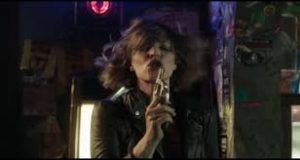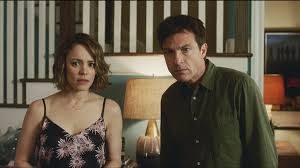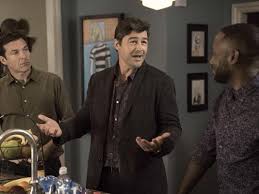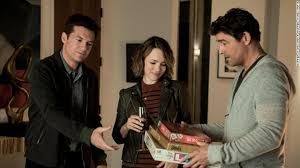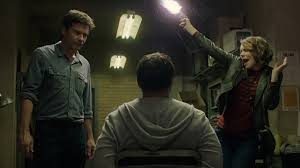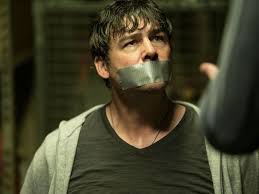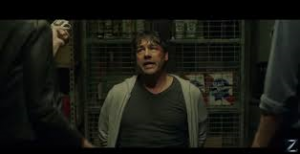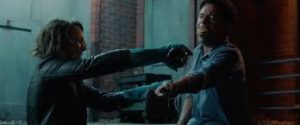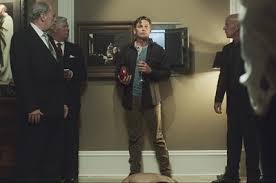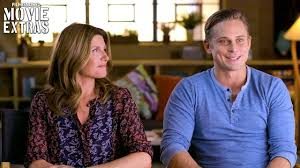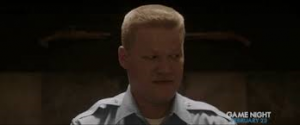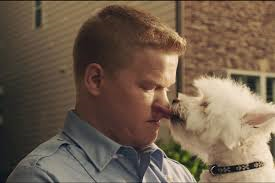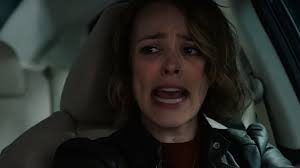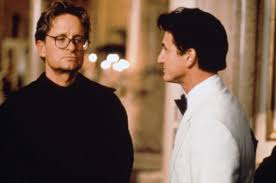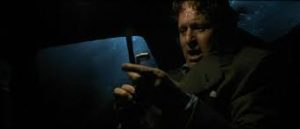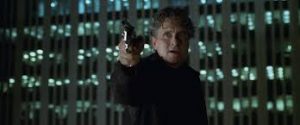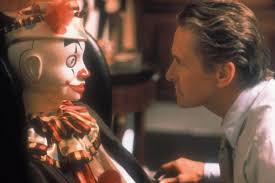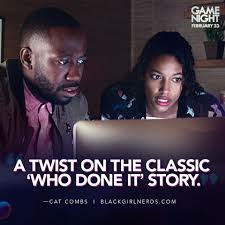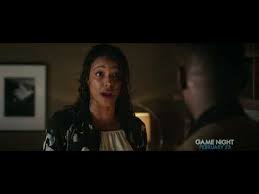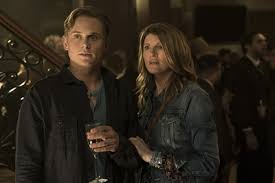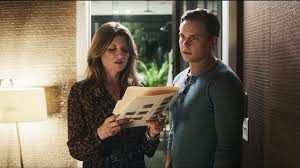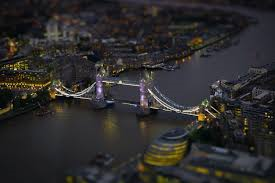SHORT TAKE:
Forget HAVING Easter eggs in it – Ready Player One really IS one big Easter egg of visual and auditory memorabilia set against a virtual reality treasure hunt but leaves one wondering who the real bad guy is.
LONG TAKE:
 The premise to Ready Player One follows Wade (Tye Sheridan – the new Scott Sommers/Cyclops), a participant in a global virtual reality treasure hunt with the prize of ownership of the virtual world Oasis and virtually (pun intended) unlimited wealth and power. Not only is he competing against all the other Gunters (Easter Egg Hunters), but finds himself up against an "evil" competitor company IOI, run by
The premise to Ready Player One follows Wade (Tye Sheridan – the new Scott Sommers/Cyclops), a participant in a global virtual reality treasure hunt with the prize of ownership of the virtual world Oasis and virtually (pun intended) unlimited wealth and power. Not only is he competing against all the other Gunters (Easter Egg Hunters), but finds himself up against an "evil" competitor company IOI, run by 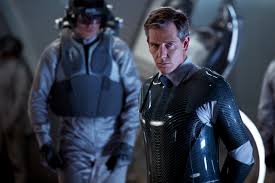 Sorrento (Ben Mendelsohn who was both the doomed sinister scientist in Rogue One and delightful as King George VI in Darkest Hour), which produces the virtual reality equipment used in the Oasis and will stop at nothing in either the virtual world or the real one to win the prize.
Sorrento (Ben Mendelsohn who was both the doomed sinister scientist in Rogue One and delightful as King George VI in Darkest Hour), which produces the virtual reality equipment used in the Oasis and will stop at nothing in either the virtual world or the real one to win the prize.
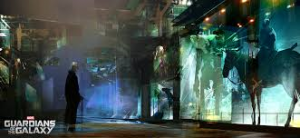
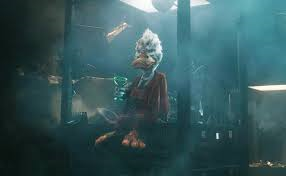 If you thought the Collector in Guardians of the Galaxy had an abundance of references to other movies, wait – because the Collector's Showroom compared to Ready Player One is like comparing a birthday candle to a blowtorch.
If you thought the Collector in Guardians of the Galaxy had an abundance of references to other movies, wait – because the Collector's Showroom compared to Ready Player One is like comparing a birthday candle to a blowtorch.
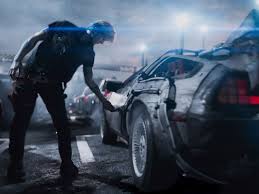
 I supposed it did all start with the 1979 Atari game Adventure. A departing employee placed his name in a video game, like the signature on a painting, which only appeared when a certain spot was hit. Atari management decided it was a good marketing ploy and started planning similar little "treasures" which eventually came to be known as "Easter eggs".
I supposed it did all start with the 1979 Atari game Adventure. A departing employee placed his name in a video game, like the signature on a painting, which only appeared when a certain spot was hit. Atari management decided it was a good marketing ploy and started planning similar little "treasures" which eventually came to be known as "Easter eggs".
As time went on the same ploy began to be used in movies. Like product placement, subtle and not so subtle references to other movies started turning up in odd places. Pixar is famous for having the Pizza Truck from Toy Story in all of their movies – as an advertisement or a toy or some other clever way to implant the image. 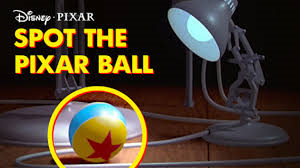 The same for the ball in the first animated Pixar lamp short, and the voice of
The same for the ball in the first animated Pixar lamp short, and the voice of 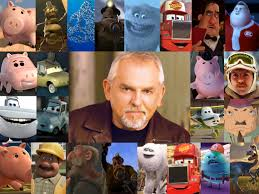 John Ratzenberger in EVERY Pixar movie – Hamm in Toy Story, the Flea circus manager in A Bug’s Life, a construction worker in Up, a crab in Finding Dory. "Easter Eggs" all. And they can be both obvious and obscure in other movies.
John Ratzenberger in EVERY Pixar movie – Hamm in Toy Story, the Flea circus manager in A Bug’s Life, a construction worker in Up, a crab in Finding Dory. "Easter Eggs" all. And they can be both obvious and obscure in other movies. 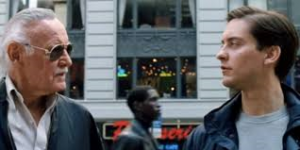

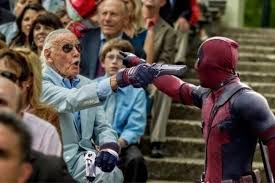 Stan Lee appears in all the Marvel movies with a cameo and one liner.
Stan Lee appears in all the Marvel movies with a cameo and one liner.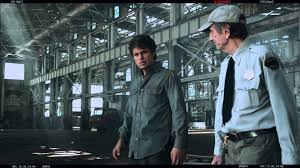 Harry Dean Stanton from the doomed Nostromo in the original Alien movie portrays a security guard in The Avengers and asks a transformed Banner who just landed/crushed a building as the Hulk, if he is an "alien".
Harry Dean Stanton from the doomed Nostromo in the original Alien movie portrays a security guard in The Avengers and asks a transformed Banner who just landed/crushed a building as the Hulk, if he is an "alien".
Easter eggs can manifest in a variety of ways – a musical theme or song, a toy, a picture or photo, the appearance of an entire character as a cameo. And I do not think it is a coincidence that the vast majority of movie Easter eggs occur in sci fi and animated movies because THAT is where the geeks are! And the geek world of video games is where they were birthed.
So, as a fellow geek, it is without fear of revealing any significant spoilers that I can safely say Ready Player One is pretty much one BIG Easter egg, or more accurately a Conga-line of familiar images, a plethora of homages, a virtual EXPLOSION of Easter eggs – and just in time for Easter.
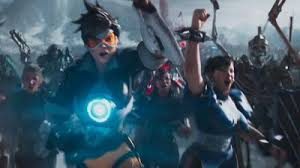 If you took a snapshot pretty much anywhere in the virtual reality, Oasis, created by Ready Player One you could probably count
If you took a snapshot pretty much anywhere in the virtual reality, Oasis, created by Ready Player One you could probably count 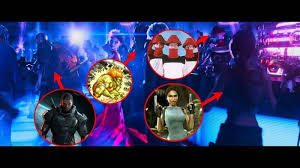
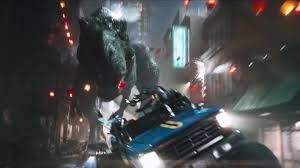 15 Easter eggs in any given random shot.
15 Easter eggs in any given random shot. 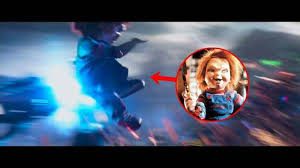 I went with my sister, my mother-in-law, my son-in-law and my oldest daughter and each of us caught images or characters or houses or landscapes or music themes that others of us did not.
I went with my sister, my mother-in-law, my son-in-law and my oldest daughter and each of us caught images or characters or houses or landscapes or music themes that others of us did not. 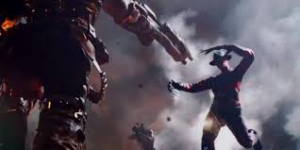 And I feel certain that even if we pooled our collective observations there were dozens in every shot that none of us saw.
And I feel certain that even if we pooled our collective observations there were dozens in every shot that none of us saw.
The homages in Ready Player One is an overload of nostalgia, almost an assault on the senses of little treasures: from Freddy Kreuger to the house out of the Wizard of Oz to the Charm of Making from John Boorman’s Excalibur to the Star Fleet insignia from Star Trek.
Not all the Easter eggs are quite so obvious. Some are thematic or even in the structure of the premise. 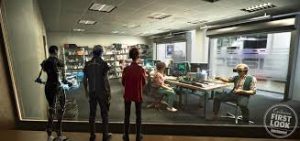
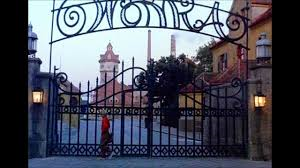 The movie can be seen as a homage to Willy Wonka and the Chocolate Factory starting with the trailer's remix of "Pure Imagination". RPO's Halliday (Mark Rylance – Bridge of Spies, Wolf Hall, Dunkirk), the co-inventor of the virtual reality world, Oasis, has a mental candy factory which he plans, posthumously, to leave to the player who completes three challenges and assorted surprise trials which, like Charlie's decision about to whom to give the Unending Gobstopper at the end of Willy Wonka, tests the integrity as well as the video gaming prowess of the players.
The movie can be seen as a homage to Willy Wonka and the Chocolate Factory starting with the trailer's remix of "Pure Imagination". RPO's Halliday (Mark Rylance – Bridge of Spies, Wolf Hall, Dunkirk), the co-inventor of the virtual reality world, Oasis, has a mental candy factory which he plans, posthumously, to leave to the player who completes three challenges and assorted surprise trials which, like Charlie's decision about to whom to give the Unending Gobstopper at the end of Willy Wonka, tests the integrity as well as the video gaming prowess of the players.
There is also a magical whimsicalness and endearing awkwardness to Rylance’s Halliday, much like there is to 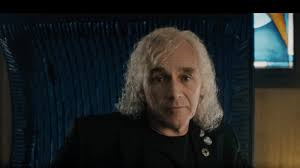
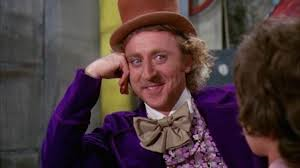 Gene Wilder's Willy Wonka. Halliday is a kind of combination Bill Gates, Willy Wonka, and Rainman – all products of the 70s and 80s.
Gene Wilder's Willy Wonka. Halliday is a kind of combination Bill Gates, Willy Wonka, and Rainman – all products of the 70s and 80s. 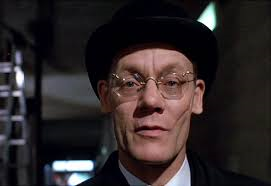
 There's also an evil competing Corporation who is out to get the secrets of Oasis at all cost, much like Slugworth is portrayed as being after the secrets to the Wonka Factory.
There's also an evil competing Corporation who is out to get the secrets of Oasis at all cost, much like Slugworth is portrayed as being after the secrets to the Wonka Factory.
Then again, the main characters and their friends play out much like 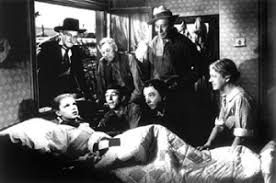
 Dorothy and her friends in The Wizard of Oz who have real life counterparts in Kansas. The Tin Man, the Cowardly Lion and the Scarecrow in Oz are farm hands on a ranch owned by Dorothy's aunt and uncle.
Dorothy and her friends in The Wizard of Oz who have real life counterparts in Kansas. The Tin Man, the Cowardly Lion and the Scarecrow in Oz are farm hands on a ranch owned by Dorothy's aunt and uncle.![]()
![]() In Ready Player One, similarly, Art3mis (not a typo) a fairy like character and Wade’s primary ally (Olivia Cooke), along with a Ninja, and a cyborg all have human counterparts in the real world.
In Ready Player One, similarly, Art3mis (not a typo) a fairy like character and Wade’s primary ally (Olivia Cooke), along with a Ninja, and a cyborg all have human counterparts in the real world.
BEYOND HERE BE MASSIVE SPOILERS – I MEAN REALLY – DON'T SAY I DIDN'T WARN YOU
But seriously – how much spoiler can there be when you know this is a Steven Spielberg movie? Nice kid and his friends go up against an evil corporate Empire. Do you really think Spielberg is going to go Brazil on us? So the kids will win……………….sort of.
BUT
What if I told you about a movie featuring an opium addicted kid who is given the opportunity to win ownership of the Opium syndicate through a series of physical and mental challenges. When he wins, predictably, in the end, he frees the slaves made to work in the field but continues making the opium, thereby perpetuating the creation of voluntary slaves who willingly take his product. You would probably think this was some kind of Chinese film noir. And I'm not sure you would think the lead was much of a hero either – certainly not a role Jackie Chan would want.
Now replace opium with a virtual reality game and you have Ready Player One.
Keep in mind this kind of premise has been dealt with many times before: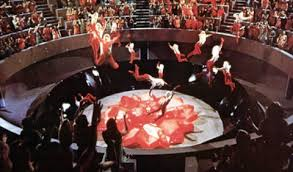 Logan’s Run – sheltered society where movement to the "next level" at 30 was a cover for the ‘60's Hippie Utopia of killing everyone over 30 (reference Who lyric: "Hope I die before I get old").
Logan’s Run – sheltered society where movement to the "next level" at 30 was a cover for the ‘60's Hippie Utopia of killing everyone over 30 (reference Who lyric: "Hope I die before I get old"). 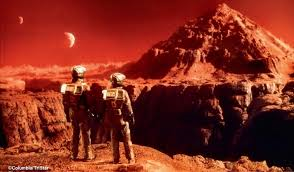 Or Total Recall where the ending is debated to this day as to whether Quaid really is on Mars as an operative or has had a psychotic breakdown in a virtual reality machine.
Or Total Recall where the ending is debated to this day as to whether Quaid really is on Mars as an operative or has had a psychotic breakdown in a virtual reality machine.  Then there was a Night Gallery episode where a woman spent all her free time in a virtual reality with a family she couldn’t have in real life because she spent all her time in a virtual reality machine!!! – which eventually blew up, killing her and leaving her consciousness in the machine with her pretend family (happy ending?????). Then there was Wall-E in which mankind has left Earth a mess to languish in a space cruise ship doing nothing but playing videogames and getting fat.
Then there was a Night Gallery episode where a woman spent all her free time in a virtual reality with a family she couldn’t have in real life because she spent all her time in a virtual reality machine!!! – which eventually blew up, killing her and leaving her consciousness in the machine with her pretend family (happy ending?????). Then there was Wall-E in which mankind has left Earth a mess to languish in a space cruise ship doing nothing but playing videogames and getting fat.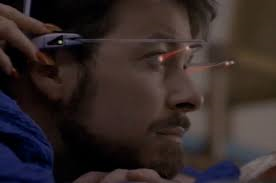 Or Star Trek: The Next Generation’s "The Game" in which the entire crew is hooked/enslaved to a VR game which rewards the pleasure centers of the brain.
Or Star Trek: The Next Generation’s "The Game" in which the entire crew is hooked/enslaved to a VR game which rewards the pleasure centers of the brain. 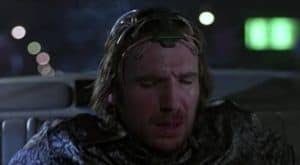 And Strange Days where people live others people's lives through virtual reality and it goes horribly wrong.
And Strange Days where people live others people's lives through virtual reality and it goes horribly wrong.
And I can’t help but remember the Simpson’s wisely self-cautionary tale titled Itchy & Scratchy & Marge wherein the only responsible adult in the Simpson family gets violence on the popular children’s program Itchy & Scratchy removed. 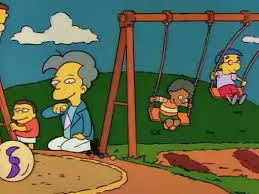 This results in the now bored kids turning the TV off and going outside. Owlishly they blink in the sunlight, then one by one the children in the neighborhood start playing ball, swinging on the playground equipment and interacting like normal children, all to the tune of Beethoven’s Pastoral Symphony accompanied by a brilliant visual homage to Disney’s Fantasia’s imagined illustration of the same Symphony.
This results in the now bored kids turning the TV off and going outside. Owlishly they blink in the sunlight, then one by one the children in the neighborhood start playing ball, swinging on the playground equipment and interacting like normal children, all to the tune of Beethoven’s Pastoral Symphony accompanied by a brilliant visual homage to Disney’s Fantasia’s imagined illustration of the same Symphony.
However, in all of these examples, the mental and emotional blight inherent in a society dominated by a cyber-arm’s length distancing from the real world is forefront. The bad guys are the ones who perpetuate the virtual reality.![]() In Ready Player One it is not the total and continual emersion in a non-real framework that is at faulty, but only the ones who run it.
In Ready Player One it is not the total and continual emersion in a non-real framework that is at faulty, but only the ones who run it.
This philosophy, which dodges the foundational problem and focuses only on the people at the helm of the destructive juggernaut, eerily reminds me of the modern liberal Socialist mentality. Modern liberals contend that Socialism and its Big Brother (pun intended) Communism are not evil but that the problems which arise of: famine, totalitarianism, crushing state run conformity, depression, suicide, collapse of healthy societal and family structures, promiscuity as an escape, abortion as a result, and persecution of religion, all come about, not because the machine is fundamentally evil, but that the wrong person ran it. Modern liberals think that the brutal dictatorship of Stalin’s Russia would have been a Utopia had Nancy Pelosi been allowed to crush people, I mean run the country (into the ground).
Don't get me wrong I love video games. I’ve played p[lenty of them myself. So I can first-hand appreciate the dangers of the allure.
In Ready Player One there is apparently no other business. 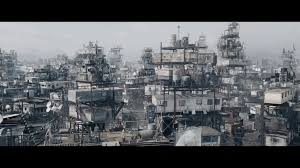
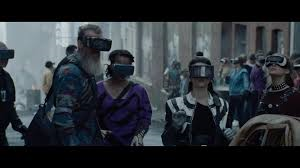 And much like in Wall-E ,
And much like in Wall-E ,
 there doesn’t seem to be anyone under eleven – what you might think a minimum age to negotiate the more complex virtual reality programs. Apparently unless you are old enough to play a video game in Ready Player One you aren’t important enough to exist in this "reality". There are certainly no babies in Ready Player One as they would take up way too much of your time from playing Oasis. There are no churches. There aren't any pets or wildlife…. or even vermin for that matter. No one cooks and pizza is delivered but there is no indication of anyone raising wheat or cows or cooking. The only thing that seems to exist is glass, metal and people playing this virtual reality game. There is no industry shown of ANY kind that does not revolve around the virtual world of Oasis. There are no grocery stores. There are no farms. Soylent Green anyone?
there doesn’t seem to be anyone under eleven – what you might think a minimum age to negotiate the more complex virtual reality programs. Apparently unless you are old enough to play a video game in Ready Player One you aren’t important enough to exist in this "reality". There are certainly no babies in Ready Player One as they would take up way too much of your time from playing Oasis. There are no churches. There aren't any pets or wildlife…. or even vermin for that matter. No one cooks and pizza is delivered but there is no indication of anyone raising wheat or cows or cooking. The only thing that seems to exist is glass, metal and people playing this virtual reality game. There is no industry shown of ANY kind that does not revolve around the virtual world of Oasis. There are no grocery stores. There are no farms. Soylent Green anyone?
This kind of environment makes more sense in a dystopian reality which you are trying to condemn. And while there is some lip service paid to the idea that video games and virtual reality should not completely supplant reality, it's a bit like telling opium addicts they should go out for a burger a couple of times a week.
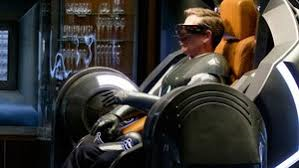 I had two opposing problems with the main bad guy, Sorrento. Biff in Back to the Future threatens dangerously but we never actually witness him kill anyone. (Yes, there is some history with the rich Biff and Mad Dog Tannen but one gets changed with history and the other kills people we do not know – not much of an ethical distinction in real life but important when defining a character in a movie). Sorrento and his henchwoman, the main bad guys in Ready Player One, do kill other people – not just their avatars – in the movie. However they are never treated like dangerous villains but more like Biff's comically evil character. But on the other hand – Sorrento at one point zeroes out all the players, throwing everyone on the planet back into the real world – like in Itchy & Scratchy & Marge. As the former Gunters and other VR players walk dazedly around looking at the sun and each other for the first time in who knows how long, the main characters note how "oddly" they are behaving – not glued to their virtual reality world. Wade, the titular good guy, eventually resurrects the Oasis through a bit of cyber legerdemain and the cycle will soon begin again. So I’m left to wonder – who is the REAL bad guy here?
I had two opposing problems with the main bad guy, Sorrento. Biff in Back to the Future threatens dangerously but we never actually witness him kill anyone. (Yes, there is some history with the rich Biff and Mad Dog Tannen but one gets changed with history and the other kills people we do not know – not much of an ethical distinction in real life but important when defining a character in a movie). Sorrento and his henchwoman, the main bad guys in Ready Player One, do kill other people – not just their avatars – in the movie. However they are never treated like dangerous villains but more like Biff's comically evil character. But on the other hand – Sorrento at one point zeroes out all the players, throwing everyone on the planet back into the real world – like in Itchy & Scratchy & Marge. As the former Gunters and other VR players walk dazedly around looking at the sun and each other for the first time in who knows how long, the main characters note how "oddly" they are behaving – not glued to their virtual reality world. Wade, the titular good guy, eventually resurrects the Oasis through a bit of cyber legerdemain and the cycle will soon begin again. So I’m left to wonder – who is the REAL bad guy here?
I’m not saying this is a bad movie – it’s really a lot of fun to watch. One could go in with a clipboard and probably get a kick out of just jotting down the visual and auditory references. Some bright bunny ought to market a checklist or Easter Egg BINGO – where you mark off all the ones you see.
But for an upbeat kid-intended movie there is a very dark side to Ready Player One. I couldn’t help but walk out of the theater a little depressed and even disturbed by the fate of the world that had been created. 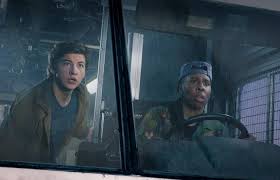 I would have been far more impressed if, at the end, the street rat turned Slumdog Millionaire,
I would have been far more impressed if, at the end, the street rat turned Slumdog Millionaire,  who had seen first hand the flaws in sucuumbing to virtual reality addiction, had used his now considerable wealthy and power to start rebuilding the city – perhaps reimbursing the former slaves for their labors, melting down the mountains of rusted and abandoned cars to build actual factories that made real THINGS people could use, was shown with blueprints to build homes to replace the "Stacks" of mobile home parks which blighted the city, founded working farms, funded scholarships.
who had seen first hand the flaws in sucuumbing to virtual reality addiction, had used his now considerable wealthy and power to start rebuilding the city – perhaps reimbursing the former slaves for their labors, melting down the mountains of rusted and abandoned cars to build actual factories that made real THINGS people could use, was shown with blueprints to build homes to replace the "Stacks" of mobile home parks which blighted the city, founded working farms, funded scholarships.
Instead we are treated to Wade snogging his girlfriend, (not even his wife) cuddled in a chair in a Penthouse apartment who notes with some self-satisfaction that he had turned off the Oasis on Tuesdays and Thursday. This would be a bit like a successful and less violent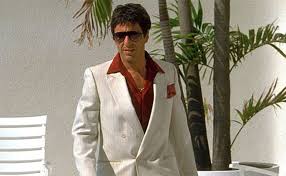
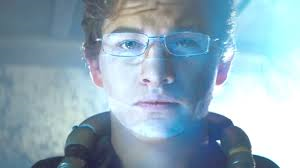 Scarface assuring us that he established meth rehab clinics for the worst of his addicted customers and doesn’t that make him a hero after all?
Scarface assuring us that he established meth rehab clinics for the worst of his addicted customers and doesn’t that make him a hero after all?
IN CONCLUSION:
I have some real mixed feelings about this one. If you go in with the intent to enjoy a cruise-line quantity banquet of nostalgia then this is the movie for you, but be aware you might be left with a very dystopian taste in your mouth after the feast.
WARNING NOTE:
I was a bit disappointed in the language used for what is primarily targeted to a young audience. There is casual use of some mild profanities but more disturbing are some specific uses of blasphemies for which there is really no justification and totally inappropriate for children to be saying. In addition there is some "just covered up" nudity but is a zombie creature and certainly not salacious. In addition there is some mild sexual innuendo. There is also extreme (expected) virtual violence but also some real world lethal force.
This all adds up to an appropriateness age of mid teens and up which is really older than what is being targeted in advertisements.

